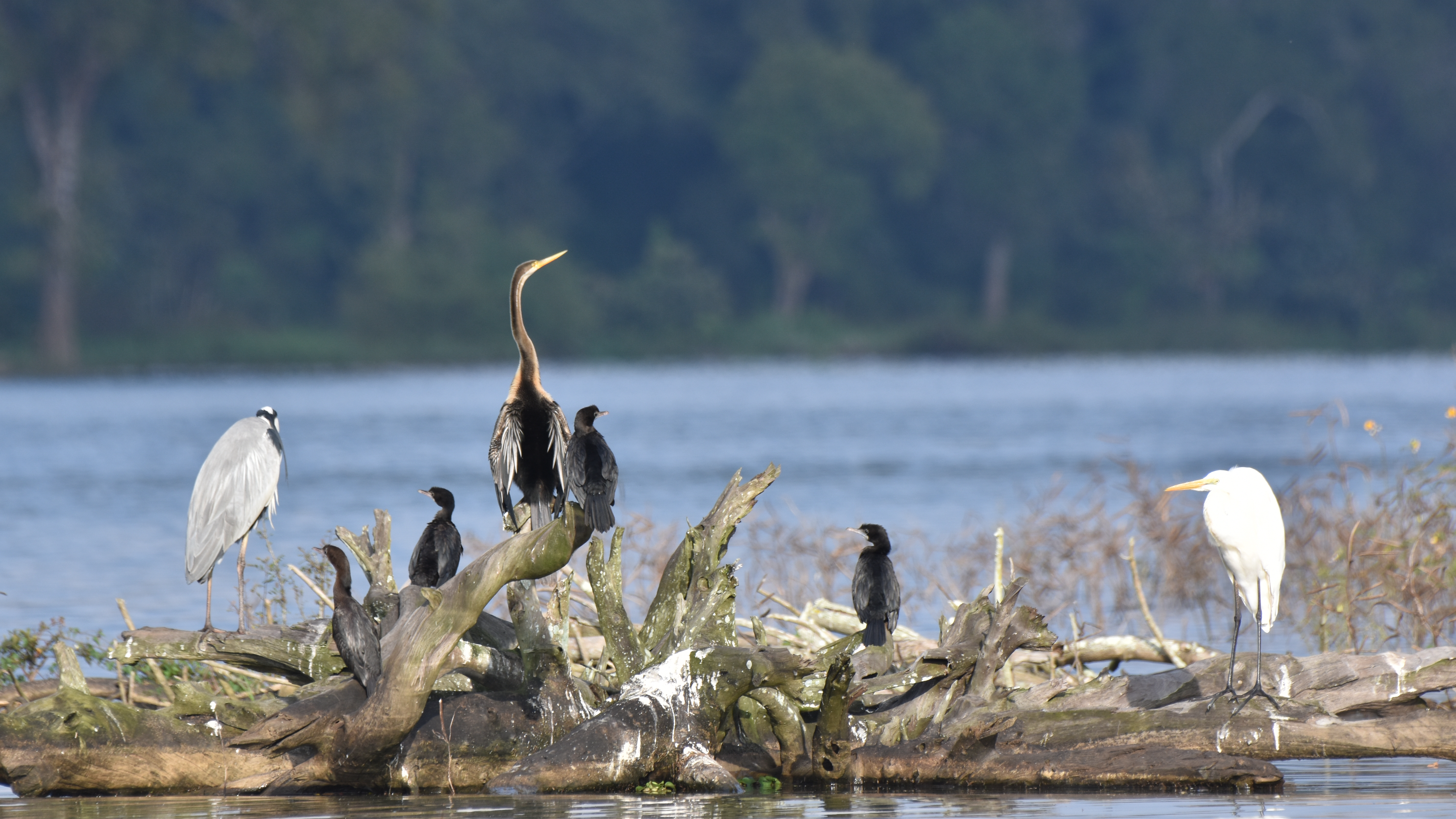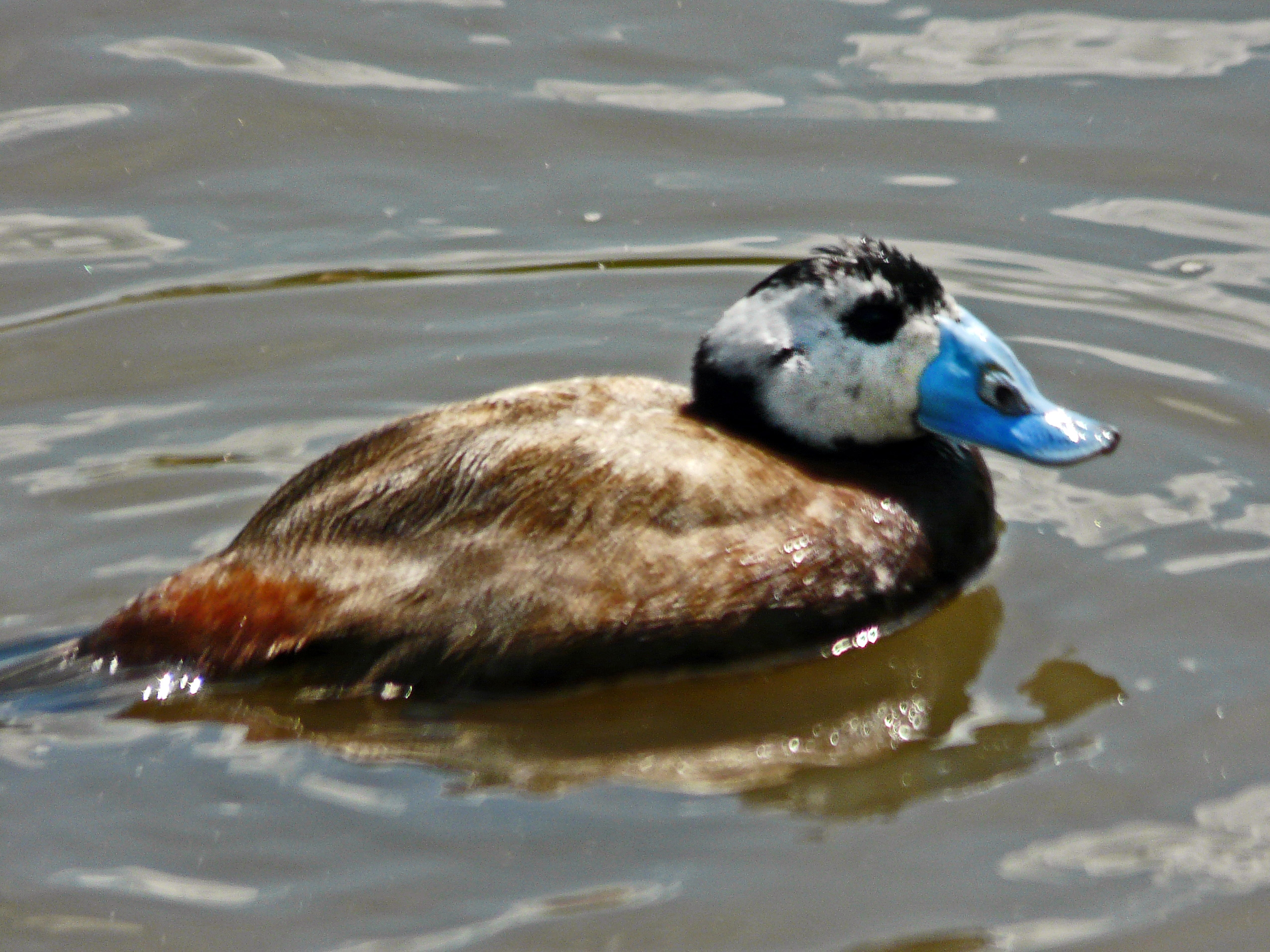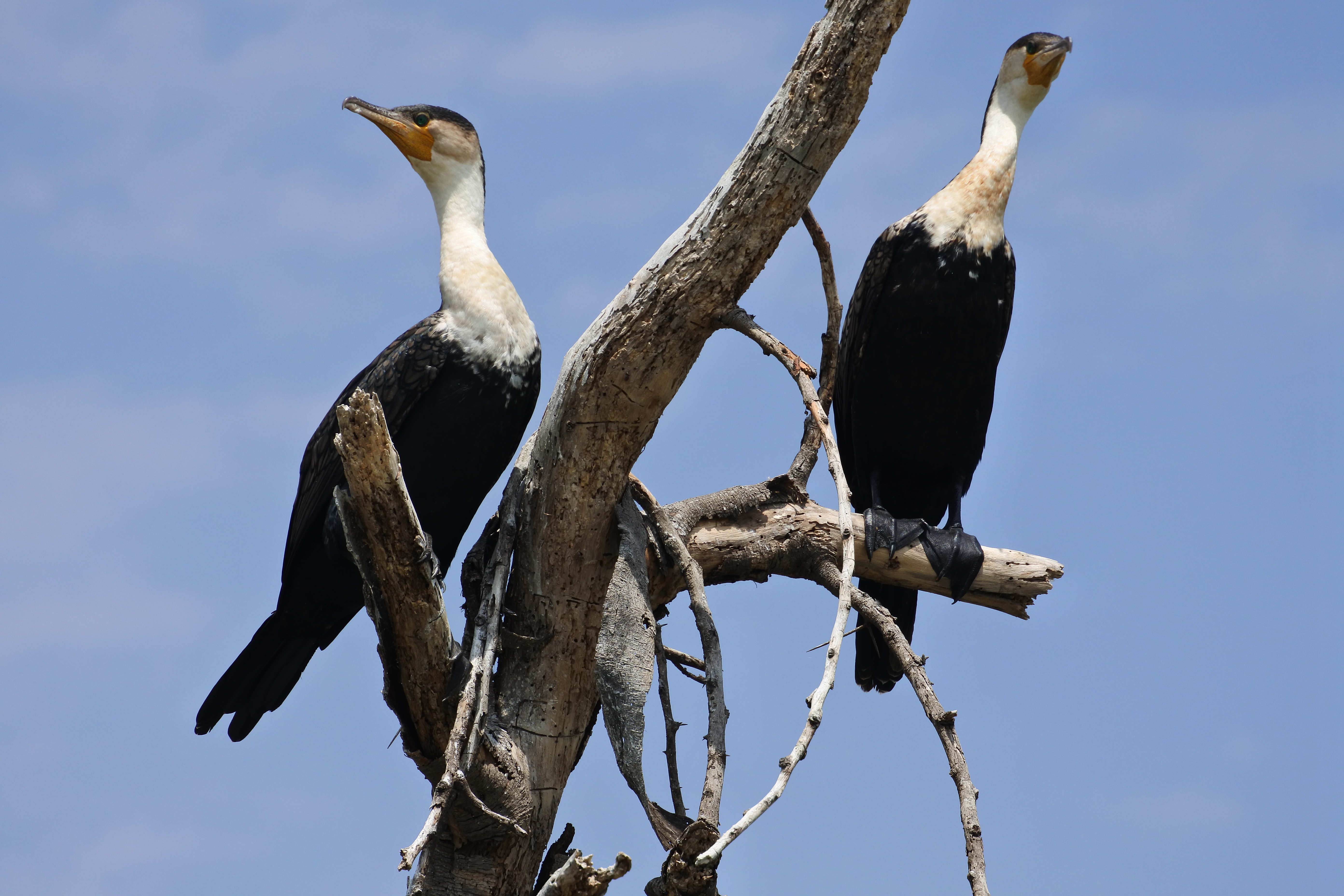|
Poda Protected Area
The nature conservation site Poda was declared a protected area in 1989 by the Bulgarian Ministry of Water and Environment. It was the first protected area in Bulgaria that is completely managed and maintained by a non-governmental organization, the Bulgarian Society for the Protection of Birds (BSPB). BSPB prepares and implements activities adopted by the Council of Minister's Management Plan, but receives its funding completely from entrance fees, souvenirs sold, and donations. Through this arrangement, it aims to be a sustainable model for nature conservation, environmental education, and eco-tourism. Located south of the port city of Bourgas on the Southeastern Bulgarian Black Sea Coast, Poda is surrounded by the Black Sea and three large lakes - Vaya Lake, Mandra Lake, and Atanasovsko Lake. Along with the protected area Poda, they form a large wetland area called the Burgas Lakes. It is a biologically important area as a resting station for many of the migratory birds who us ... [...More Info...] [...Related Items...] OR: [Wikipedia] [Google] [Baidu] |
Bulgaria
Bulgaria, officially the Republic of Bulgaria, is a country in Southeast Europe. It is situated on the eastern portion of the Balkans directly south of the Danube river and west of the Black Sea. Bulgaria is bordered by Greece and Turkey to the south, Serbia and North Macedonia to the west, and Romania to the north. It covers a territory of and is the tenth largest within the European Union and the List of European countries by area, sixteenth-largest country in Europe by area. Sofia is the nation's capital and List of cities and towns in Bulgaria, largest city; other major cities include Burgas, Plovdiv, and Varna, Bulgaria, Varna. One of the earliest societies in the lands of modern-day Bulgaria was the Karanovo culture (6,500 BC). In the 6th to 3rd century BC, the region was a battleground for ancient Thracians, Persians, Celts and Ancient Macedonians, Macedonians; stability came when the Roman Empire conquered the region in AD 45. After the Roman state splintered, trib ... [...More Info...] [...Related Items...] OR: [Wikipedia] [Google] [Baidu] |
Great White Egret
The great egret (''Ardea alba''), also known as the common egret, large egret, great white egret, or great white heron, is a large, widely distributed egret. The four subspecies are found in Asia, Africa, the Americas, and southern Europe. Recently, it has also been spreading to more northern areas of Europe. Distributed across most of the tropical and warmer temperate regions of the world, it builds tree nests in colonies close to water. Taxonomy The great egret was formally described in 1758 by the Swedish naturalist Carl Linnaeus in the tenth edition of his ''Systema Naturae'' under the binomial name ''Ardea alba''. He specified the type locality as Europe. The scientific name comes from Latin ''ardea'', "heron", and ''alba'', "white". Like all egrets, it is a member of the heron family, Ardeidae. Traditionally classified with the storks in the Ciconiiformes, the Ardeidae are closer relatives of pelicans and belong in the Pelecaniformes, instead. The great egret—un ... [...More Info...] [...Related Items...] OR: [Wikipedia] [Google] [Baidu] |
Pygmy White Toothed Shrew
The Etruscan shrew (''Suncus etruscus''), also known as the Etruscan pygmy shrew, white-toothed pygmy shrew and Savi's pygmy shrew, is the smallest known extant mammal by mass, weighing only about on average. (The bumblebee bat is regarded as the smallest mammal by skull size and body length.) The Etruscan shrew has a body length of about excluding the tail. It is characterized by very rapid movements and a fast metabolism, eating about 1.5–2 times its own body weight per day. It feeds on various small vertebrates and invertebrates, mostly insects, and can hunt individuals of the same size as itself. These shrews prefer warm and damp climates and are widely distributed in the belt between 10° and 45°N latitude stretching from Europe and North Africa to Malaysia. They are also found in the Maltese islands, situated in the middle of the Mediterranean Sea. Although widespread and not threatened overall, they are generally uncommon and are endangered in some countries. Descript ... [...More Info...] [...Related Items...] OR: [Wikipedia] [Google] [Baidu] |
Poda - Entry View
Poda may refer to: Places *Poda Protected Area, Bulgaria *Poda, Gacko, Bosnia and Herzegovina * Poda, Jablanica, Bosnia and Herzegovina * Poda, Bijelo Polje, Montenegro * Poda (Sjenica), Serbia * Podë, Albania, a deserted village *Koh Poda or Poda Island, Thailand People with the surname * Zylyftar Poda, Albanian leader of early 1800s *Nikolaus Poda von Neuhaus (1723–1798), Austrian entomologist *John Poda John Merle Poda Jr. (born 1936 or 1937) is an American politician from Ohio who served as a member of the Ohio General Assembly for the Democratic Party. A public relations officer by trade, Poda's father was a member of the Ohio House of Repre ..., politician from Ohio See also * {{disambiguation, geo, surname ... [...More Info...] [...Related Items...] OR: [Wikipedia] [Google] [Baidu] |
Pochard , ''Netta erythrophthalma''
{{Animal common name ...
Pochard is a common name used for several species of diving ducks: *Four species in the genus ''Aythya'': ** Common pochard, ''Aythya ferina'' ** Baer's pochard, ''Aythya baeri'' ** Ferruginous pochard, ''Aythya nyroca'' ** Madagascar pochard, ''Aythya innotata'' * Three species in the genus '' Netta'': ** Red-crested pochard, ''Netta rufina'' ** Rosy-billed pochard or Rosybill, ''Netta peposaca'' ** Southern pochard The southern pochard (''Netta erythrophthalma'') is a species of duck, and a member of the genus '' Netta''. There are two subspecies, the South American (southern) pochard ''N. e. erythrophthalma'' (Wied-Neuwied, 1833) and the African (southern) ... [...More Info...] [...Related Items...] OR: [Wikipedia] [Google] [Baidu] |
Coot
Coots are medium-sized water birds that are members of the rail family, Rallidae. They constitute the genus ''Fulica'', the name being the Latin term for "coot". Coots have predominantly black plumage, and—unlike many rails—they are usually easy to see, often swimming in open water. Taxonomy and systematics The genus ''Fulica'' was introduced in 1758 by the Swedish naturalist Carl Linnaeus in the tenth edition of his ''Systema Naturae''. The genus name is the Latin word for a Eurasian coot. The name was used by the Swiss naturalist Conrad Gessner in 1555. The type species is the Eurasian coot. A group of coots is referred to as a ''covert'' or ''cover''. Species The genus contains 10 extant species and one which is now extinct. Extinct species Recently extinct species * ''Fulica newtonii'' Milne-Edwards, 1867 – Mascarene coot (extinct, c. 1700) Late Quaternary species * ''Fulica chathamensis'' Forbes, 1892 – Chatham Island coot ( early Holocene of the ... [...More Info...] [...Related Items...] OR: [Wikipedia] [Google] [Baidu] |
White-headed Duck
The white-headed duck (''Oxyura leucocephala'') is a small diving duck some long. The male has a white head with black crown, a blue bill, and reddish-grey plumage. The female has a dark bill and rather duller colouring. Its breeding habitat is lakes with open water and dense vegetation at the margin. It dives under water and feeds on aquatic vegetation as well as some animal matter. It is more likely to swim away from a perceived threat than to fly. This duck is known from Spain, North Africa, Western Asia and Central Asia. Populations are declining, mostly due to Habitat destruction, loss of habitat and pollution, and the International Union for Conservation of Nature has rated the bird's status as "endangered species, endangered". Taxonomy and systematics The white-headed duck was originally described as ''Anas leucocephala'' by Giovanni Antonio Scopoli, Giovani Antonio Scopoli in 1769. It is currently in the genus Stiff-tailed duck, Oxyura. Other generic synonyms used in th ... [...More Info...] [...Related Items...] OR: [Wikipedia] [Google] [Baidu] |
Dalmatian Pelican
The Dalmatian pelican (''Pelecanus crispus''), also known as the curly-headed pelican, is the largest member of the pelican family and among the heaviest flying birds in the world. With a wingspan typically ranging between 2.7 and 3.2 meters (8.9–10.5 feet), it ranks among the largest soaring birds. These pelicans are known for their graceful flight and often travel in synchronized flocks. With a range spanning across much of Central Eurasia, from the eastern Mediterranean in the west to the Taiwan Strait in the east, and from the Persian Gulf in the south to Siberia in the north, it is a short-to-medium-distance Bird migration, migrant between breeding and overwintering areas. As with other pelicans, its diet is mainly fish, and the males are sexual dimorphism, larger than the females. Its curly nape feathers, grey legs and silvery-white plumage are distinguishing features, and the wings appear solid grey in flight. The adults acquire a Moulting, drabber plumage in winter, howev ... [...More Info...] [...Related Items...] OR: [Wikipedia] [Google] [Baidu] |
Pygmy Cormorant
The pygmy cormorant (''Microcarbo pygmaeus'') is a member of the Phalacrocoracidae (cormorant) family of seabirds. It breeds in south-eastern Europe and south-western Asia. It is partially migratory, with northern populations wintering further south, mostly within its breeding range. It is a rare migrant to western Europe. Distribution The pygmy cormorant occupies an area from the south-east of Europe (east of Italy) and the south-west of temperate Asia, east to Kazakhstan, Tajikistan, Turkmenistan, and Uzbekistan. The largest distribution is in south-east Europe, Albania, Greece, Bulgaria, Romania, the Balkan countries, Turkey, Cyprus, Iran, Iraq (namely the Tigris–Euphrates river system), Azerbaijan, Israel, Syria. In Romania, according to studies of Czech ornithologist Robert Ritter von Dombrowski, at the end of the 19th century, the pygmy cormorant was present in large colonies in the Danube Delta, Brăila and Ialomița Pond, on Vederoasa Lake (Constanța County), on c ... [...More Info...] [...Related Items...] OR: [Wikipedia] [Google] [Baidu] |
Brackish
Brackish water, sometimes termed brack water, is water occurring in a natural environment that has more salinity than freshwater, but not as much as seawater. It may result from mixing seawater (salt water) and fresh water together, as in estuaries, or it may occur in brackish fossil aquifers. The word comes from the Middle Dutch root '' brak''. Certain human activities can produce brackish water, in particular civil engineering projects such as dikes and the flooding of coastal marshland to produce brackish water pools for freshwater prawn farming. Brackish water is also the primary waste product of the salinity gradient power process. Because brackish water is hostile to the growth of most terrestrial plant species, without appropriate management it can be damaging to the environment (see article on shrimp farms). Technically, brackish water contains between 0.5 and 30 grams of salt per litre—more often expressed as 0.5 to 30 parts per thousand (‰), which is a spec ... [...More Info...] [...Related Items...] OR: [Wikipedia] [Google] [Baidu] |
Great Cormorant
The great cormorant (''Phalacrocorax carbo''), also known as just cormorant in Britain, as black shag or kawau in New Zealand, formerly also known as the great black cormorant across the Northern Hemisphere, the black cormorant in Australia, and the large cormorant in India, is a widespread member of the cormorant family of seabirds. It breeds in much of the Old World, Australasia, and the Atlantic coast of North America. Taxonomy The great cormorant was formally described in 1758 by the Swedish naturalist Carl Linnaeus in the tenth edition of his ''Systema Naturae'' under the binomial name ''Pelecanus carbo''. Linnaeus specified the type location as "Europe", but this was restricted to the "rock-nesting form of the north Atlantic Ocean" by the German ornithologist Ernst Hartert in 1920. The great cormorant is now one of 12 species placed in the genus '' Phalacrocorax'' that was introduced in 1760 by the French zoologist Mathurin Jacques Brisson. The genus name is Latinised Anc ... [...More Info...] [...Related Items...] OR: [Wikipedia] [Google] [Baidu] |
Little Tern
The little tern (''Sternula albifrons'') is a seabird of the family Laridae. It was first described by the German naturalist Peter Simon Pallas in 1764 and given the binomial name ''Sterna albifrons''. It was moved to the genus '' Sternula'' when the genus '' Sterna'' was restricted to the larger typical terns. The genus name ''Sternula'' is a diminutive of ''Sterna'', 'tern', while the specific name ''albifrons'' is from Latin ''albus'', 'white', and ''frons'', 'forehead'. Distribution This bird breeds on the coasts and inland waterways of temperate and tropical Europe, Asia, north and west Africa, and eastern Australia. It is strongly migratory, wintering in the subtropical and tropical oceans as far south as South Africa and Australia. Subspecies There are four subspecies. * The nominate ''S. a. albifrons'' occurs in Europe to North Africa and western Asia * ''S. a. guineae'' of western Africa * ''S. a. sinensis'' in eastern Asia (SE Russia to Japan, SE Asia, Philippines) ... [...More Info...] [...Related Items...] OR: [Wikipedia] [Google] [Baidu] |






